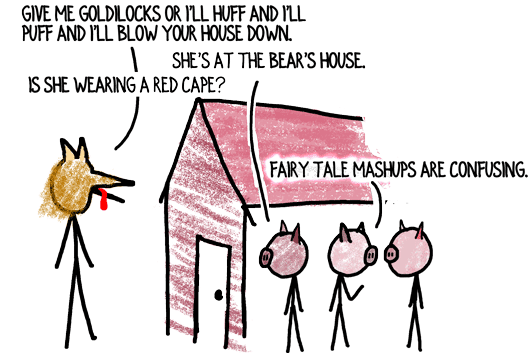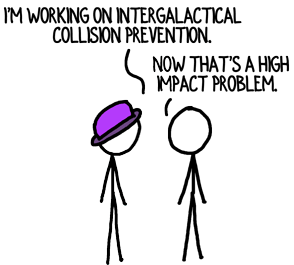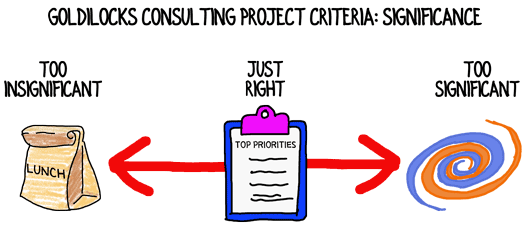Before Goldilocks was eaten by the three bears (or was it the three pigs?), she fussily spotted the ideal porridge, chair and bed for herself. What’s the ideal consulting opportunity for your consulting firm?
There are myriad guidelines you could apply to pinpoint your ideal consulting opportunity. For example, strategic fit, duration of project, or likelihood of receiving truffles.

Let’s focus on two criteria, both of which are Right-Side Up (i.e., about you client, not your consulting firm): Significance and Time Horizon. This article will cover Significance and the next one will hit the even more important topic of Time Horizon.
Significance
When a prospect approaches your consulting firm (or you approach a prospect), your conversation will eventually revolve around a specific issue; a problem or aspiration your consulting firm can address.
Significance describes where the issue you’re solving fits into the grand scale of problems in the universe. The more significant (and higher value) the problem, the more revenue and margin is available for your consulting firm. There’s a catch, though, which we’ll get to in a moment.
Some consultants complain that their firm’s focus on low-significance problems limits their ability to win large, high-ticket projects.
This is particularly true of consulting firms that target staff functions, work with low-to-mid-level executives, or handle soft issues like leadership. “What we do isn’t tied to the big picture,” they cry.
The truth is, no matter what you’re talking about, there’s always a bigger picture, a wider view, a grander sweep of significance. And that’s the catch.
Enhancing janitorial staff efficiency doesn’t drive the master plan as much as improving sales results. But sales results aren’t as grand a focus as improving profit.
For that matter, profit isn’t as high impact as your client’s share price or the sun consuming the earth during the star’s end-of-life expansion. (Which isn’t a real problem, because the Andromeda galaxy will collide with the Milky Way galaxy long before our sun burns out.)

Tackling janitorial efficiency may be insufficiently significant to warrant attractive fees, but boosting your client’s share price may be a problem that floats outside your prospect’s consideration and beyond your consulting firm’s capabilities.
So, what’s the right level of significance? Set your sights on Five-by-Five.
Five-by-Five
Your prospect’s top five priorities and his boss’ top five priorities define where the budgets are plentiful, the margins are highest, and you’re connected to the decision-maker.
Projects disconnected from the Five-by-Five zone are either too far above your prospect’s remit for you to reach easily or are too low priority to warrant your prospect’s interest and high fees.

Your job during the Context Discussion—before you submit a proposal—is to connect your project to one of the Five-by-Five priorities.
Five-by-Five Significance is one hallmark of your consulting firm’s Goldilocks projects. (Another hallmark is the Time Horizon, which we’ll cover in next article.)
Until we get there, though, tell me: have you ever chased a project that turned out to be too big or too small?
Text and images are © 2024 David A. Fields, all rights reserved.

 David A. Fields Consulting Group
David A. Fields Consulting Group 

Not sure this comment is relevant to this discussion or to a future one, but here goes:
What do you do when a large company thinks you are too small for the job? Or conversely, what do you say when a small company thinks they are too small for you?
You’ve brought up the opposite side of the problem, Dan, which is quite interesting. Clients are looking for their own Goldilocks consulting firm; one that they judge (for whatever reason) to be neither too big nor too small.
The “too small” problem occurs quite frequently for boutique firms. While you were posting your comment, I was chatting with the owner of a 35-person firm who was rejected by a prospect unwilling to work with any firm smaller than 100 consultants. Why? No good reason.
Trying to convince someone that they should consider a firm that’s “below” their criteria is usually a fruitless endeavor. It’s better to just move along to open minded folks who think you’re just right.
In the case of clients who think you’re too big, that’s usually a fear of cost and an estimation that the value of success isn’t worth the investment. In many cases they’re right–they’re too small. However, you at least have a fighting chance with them by exploring the benefit and telling them to set aside the cost concerns for the moment.
Great question, Dan!
Often a small project leads to a large Goldilocks project, if you are lucky. A small project allows you to open the door and be inside to learn about other opportunities. And if you do the small project well and the project deliverable embeds the proposals for the larger projects, you might get lucky!
Sky, you’ve nicely highlighted the difference between the size of a project and the Significance of the project. A Goldilocks project could be fairly small or a pilot, and still be connected to your prospect’s Five-by-Five.
That’s why neither of the two hallmarks of a Goldilocks opportunity (Significance and Time Horizon) is size. There are definitely minimum acceptable projects and there are projects too big for your firm to handle; however, between those two extremes is a vast array of potential wins for your firm.
Thanks for highlighting that important distinction, Sky.